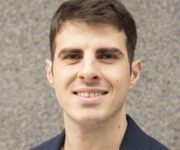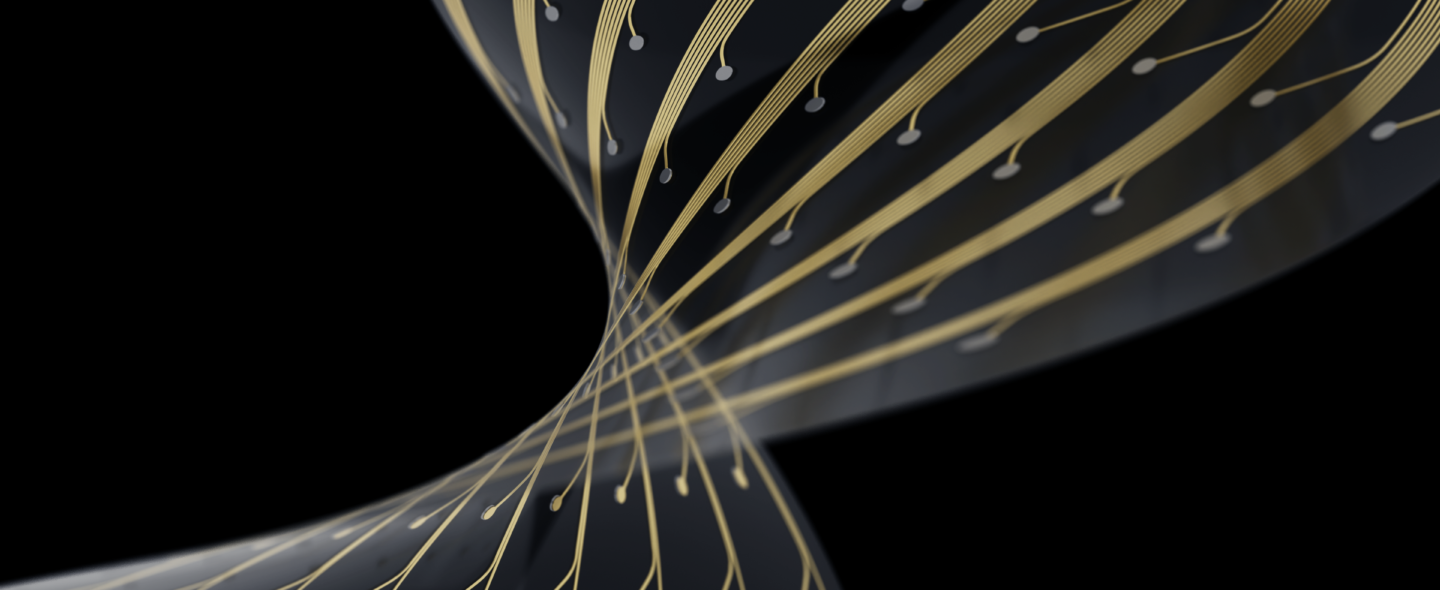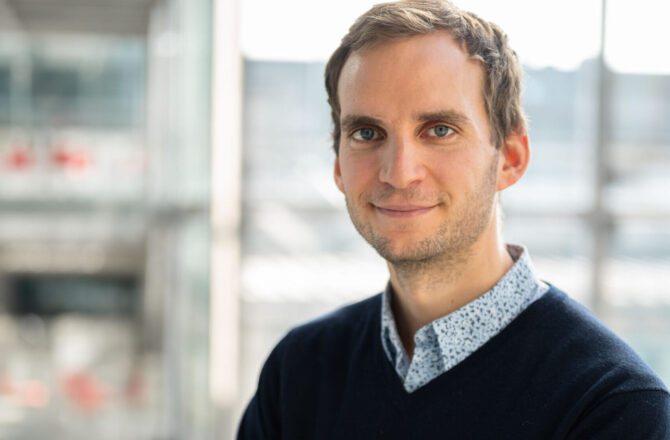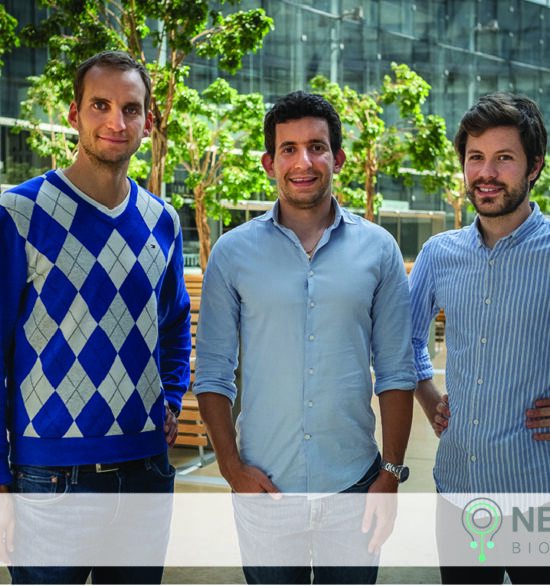
Marko Radovic
As one of the startups featured in our Connected Human exhibition in June 2025, Ludovic Serex, co-founder of Neurosoft Bioelectronics, shared how this startup bridges neuroscience research and medical innovation. From treating tinnitus to envisioning seamless brain-machine interfaces, Neurosoft Bioelectronics’ journey highlights the promise and challenges of bringing neurotechnology from the lab to life.
The Promise of Neurotechnology
According to the World Health Organization (WHO), neurological disorders are the world’s leading cause of disease and disability, affecting over a third of the population, with limited treatments available. Neurotechnology thrives on collaboration among scientists, engineers, clinicians, and regulators to push innovation forward.
Switzerland’s innovation hubs, such as École Polytechnique Fédérale de Lausanne (EPFL), nurture medtech pioneers like Neurosoft Bioelectronics. A runner-up in the Global Healthcare Challenge and recipient of the Swiss Accelerator Grant, Neurosoft aims to bring breakthrough solutions for neurological disorders to market.
We spoke with Ludovic Serex about Neurosoft Bioelectronics’ mission, its transition from academia to entrepreneurship, and the transformative potential of neurotechnology in Switzerland and Japan.
"That’s why we started this company: we believed this technology had huge potential to improve people’s lives and that a startup was the best way to bring it out of the lab and into the world."
Can you explain what neurotechnology is and how it’s used to help people with brain or nerve conditions?
Sure. Neurotechnology means that we use advanced devices and software to better understand and treat brain and nerve conditions and seek to address this huge unmet need. This includes using tools like brain-machine interfaces (BMIs), which detect brain signals, process them, and translate them into commands for devices that help restore movement or function lost due to neurological conditions.
Neurosoft Bioelectronics is tackling one of the most sensitive frontiers of healthcare: the human brain. Could you briefly introduce your company and the mission driving your work?
As you mentioned we are focused on tackling the human brain. We want to be able to interface with it through BMI, reading from or writing into the brain through stimulation. One of the reasons is that there are currently three billion people suffering from neurological diseases, and there are still no treatments for many of these conditions and we want to provide a safe way to treat them.
What inspired you to take your innovation outside the lab and into the world as a startup? What made you believe it could, and should, go beyond research?
I come from research. I loved researching, being in the lab, building new things and going beyond what’s known now. However, I believe that the laboratory has one mission, which is to look for these kinds of new answers. Once you get to this point, you start looking somewhere else that’s even newer.
Our technology had been in the laboratory for quite some time, and it was showing so much promise in animal models that we thought it would be great if humans could benefit from this research. This is where I think startups are the right tool because you can invest resources into making the technology available and safe for use.
That’s actually why we started this company: we believed in the technology, that it could benefit humans, and that the work that needed to be done was better handled by a startup rather than remaining in the laboratory. That’s what drove us.
Could you give us an example of a neurological disease you’re tackling?
Of course. One of the diseases that our technology is well equipped to tackle is tinnitus. It’s this ringing in the ear that many people suffer from. It can range from very mild symptoms—about 15% of the population has this condition—to severe cases. Our technology, with its mechanical properties, is well-suited to reach the region around the Sylvian fissure in the brain in order to address this disease. That’s one of our key targets, and we believe that our startup is uniquely positioned to tackle it.
How does it feel to be the runner-up in the Global Healthcare Challenge 2025?
That was quite a surprise. I was really happy that we got selected as one of the winners of the competition. It was a journey from 350 participants at the beginning to only three people winning an award, so it was a great achievement for us. It was a well-organized competition, and it brought a lot of exposure for the company in Osaka and beyond!
Switzerland is often seen as a powerhouse for science and innovation. From your perspective, what makes the Swiss ecosystem a strong launchpad for a health tech startup like yours?
Switzerland provides the perfect launchpad for a deep-tech startup by combining three key strengths: world-class academic institutions like EPFL that produce top talent, a uniquely supportive network of early-stage grants and incubators, and access to state-of-the-art research infrastructure. This powerful combination of talent, funding, and facilities has been essential for our growth.
What collaborations or partnerships have been key for your progress, in Switzerland or internationally?
Our progress has been accelerated by pivotal Swiss partnerships. Innosuisse, through its grants and expert coaching, has been fundamental. We have also received critical support, scientific expertise, and essential resources from key players in the Lake Geneva region, including EPFL, the Wyss Center, Campus Biotech, as well as the incubator FONGIT.
Do you see potential for collaboration between Swiss and Japanese ecosystems, especially in health tech or neuroengineering?
Absolutely. While my contact with the Japanese ecosystem is recent, the high caliber of its universities and the advanced discussions I’ve already had point to significant potential. I see clear opportunities for collaboration, merging Swiss neuro-innovation with Japan’s renowned expertise in precision engineering and technology.
What potential do you see for collaboration between the Swiss and Japanese innovation ecosystems, particularly in neuroengineering or medical technologies?
Japan has always been on our mind as a country, and we also have some patent intellectual property there. It’s a country where we plan to develop our technology as well because it’s one of those advanced nations with a highly developed healthcare system. For us, it was quite obvious that we will need to come to Japan, and this was a good first step for us!
Looking ahead, what is your vision for the future of brain interfaces and human-machine interaction? What new possibilities do you hope to unlock in the coming years?
Our vision is to address the vast unmet needs in neurological health, where over three billion people are affected at various levels. We are focused on developing solutions for severe conditions, moving from treatment toward a deeper understanding. In the coming years, we aim to unlock more intuitive and direct interaction with the brain, restoring function and ultimately creating a new paradigm for human-machine interaction.
Interview conducted by Leïla Joutet
Editorial direction and final review by Alice Rouaud
Neurosoft Bioelectronics embodies the spirit of innovation driving Switzerland’s medtech ecosystem. As global health challenges persist, Ludovic Serex and his team remind us that the future of neuroscience lies in collaboration, bold research, and transforming scientific breakthroughs into real-world solutions.
Marko Radovic


